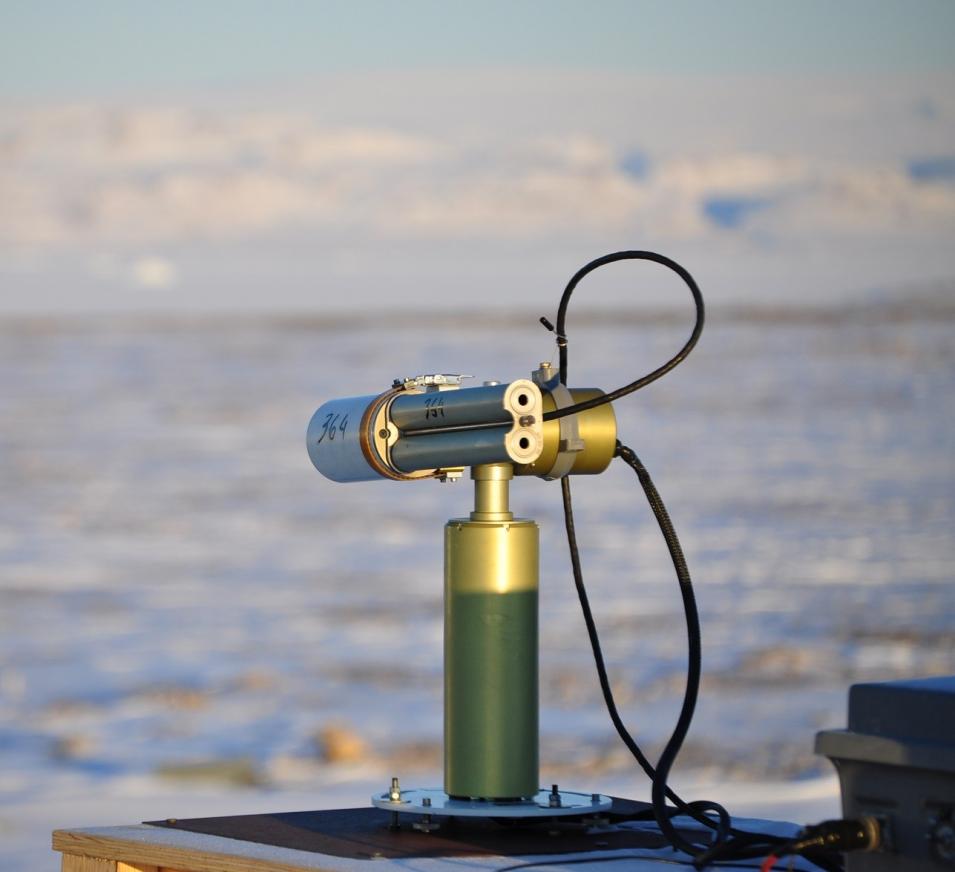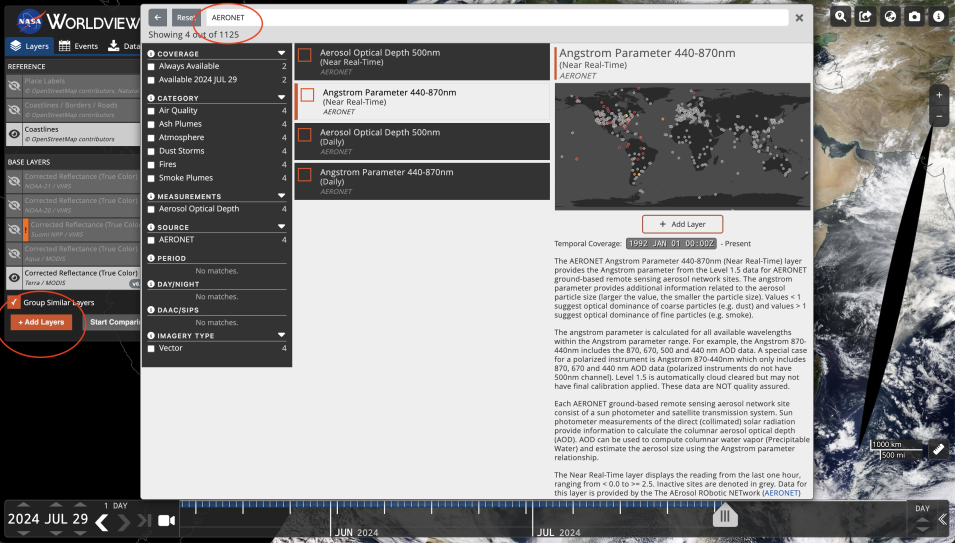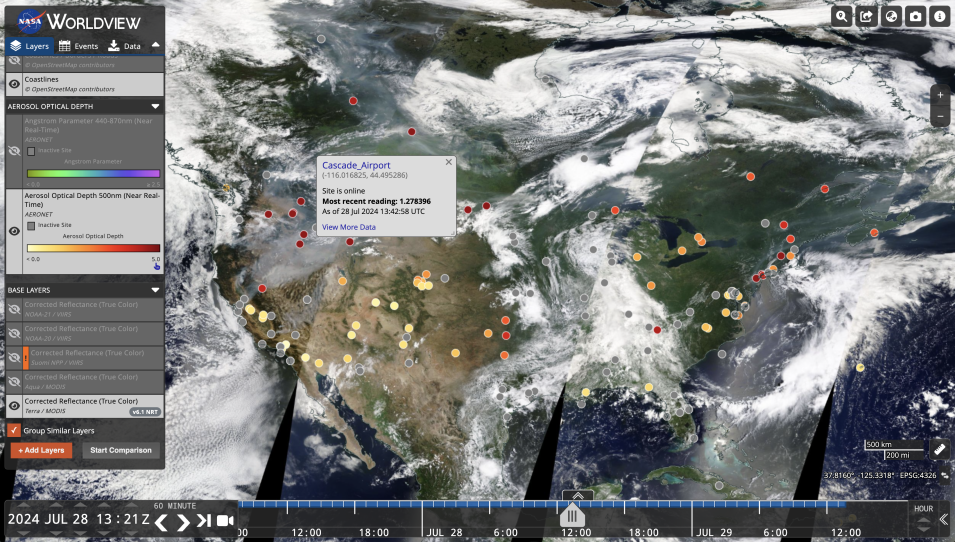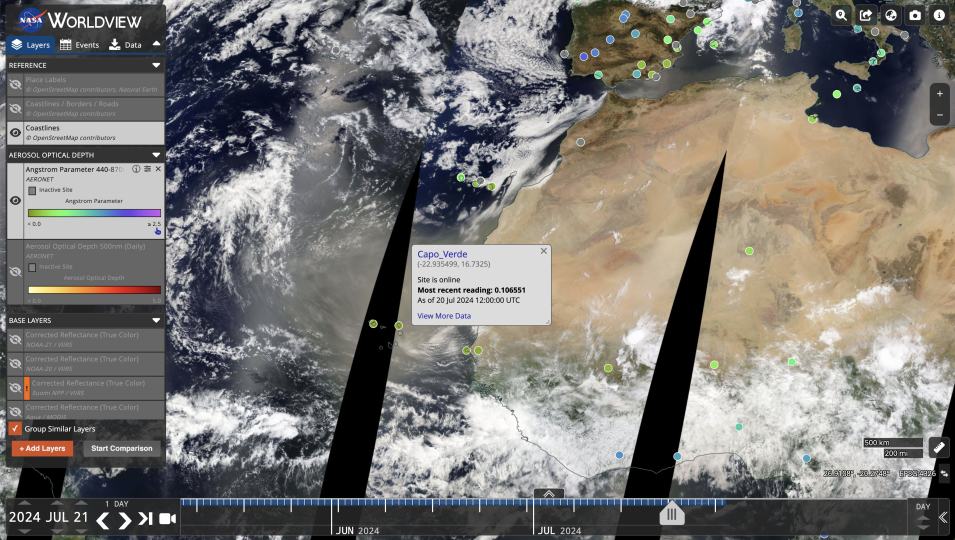NASA Worldview has expanded its suite of satellite-based remote sensing measurements of aerosol optical depth (AOD) and Angstrom parameter to include four new layers of ground-based measurements from the global Aerosol Robotic Network (AERONET) program. Users can now quickly and easily compare ground based measurements to satellite based measurements in NASA Worldview to validate their findings.
AERONET is a federated network of ground-based remote sensing aerosol sensors established by NASA and the PHOtométrie pour le Traitement Opérationnel de Normalisation Satellitaire (PHOTONS) in 1993. The federation includes collaborators from a global network of national agencies, institutes, universities, individual scientists, and partners. AERONET provides a long-term, public domain database of aerosol optical, microphysical, and radiative properties.
Atmospheric Aerosols and their Measurement
Aerosols are suspended liquid or solid particles that are small enough to be easily transported by air currents. Water vapor, smoke, dust, sea salt, and industrial pollutants are all examples of aerosols. It is important to monitor atmospheric aerosols as these particles can compromise human health when inhaled, particularly in individuals with asthma or other respiratory illnesses. Aerosols also impact weather and climate by cooling or warming Earth by helping or preventing clouds from forming.
Each AERONET ground-based remote sensing aerosol network site consists of a Sun photometer and a satellite transmission system. Sun photometer measurements of solar radiation provide information to calculate columnar AOD. AOD can be used to compute columnar water vapor (precipitable water) and to estimate the aerosol particle size using the Angstrom parameter relationship.



